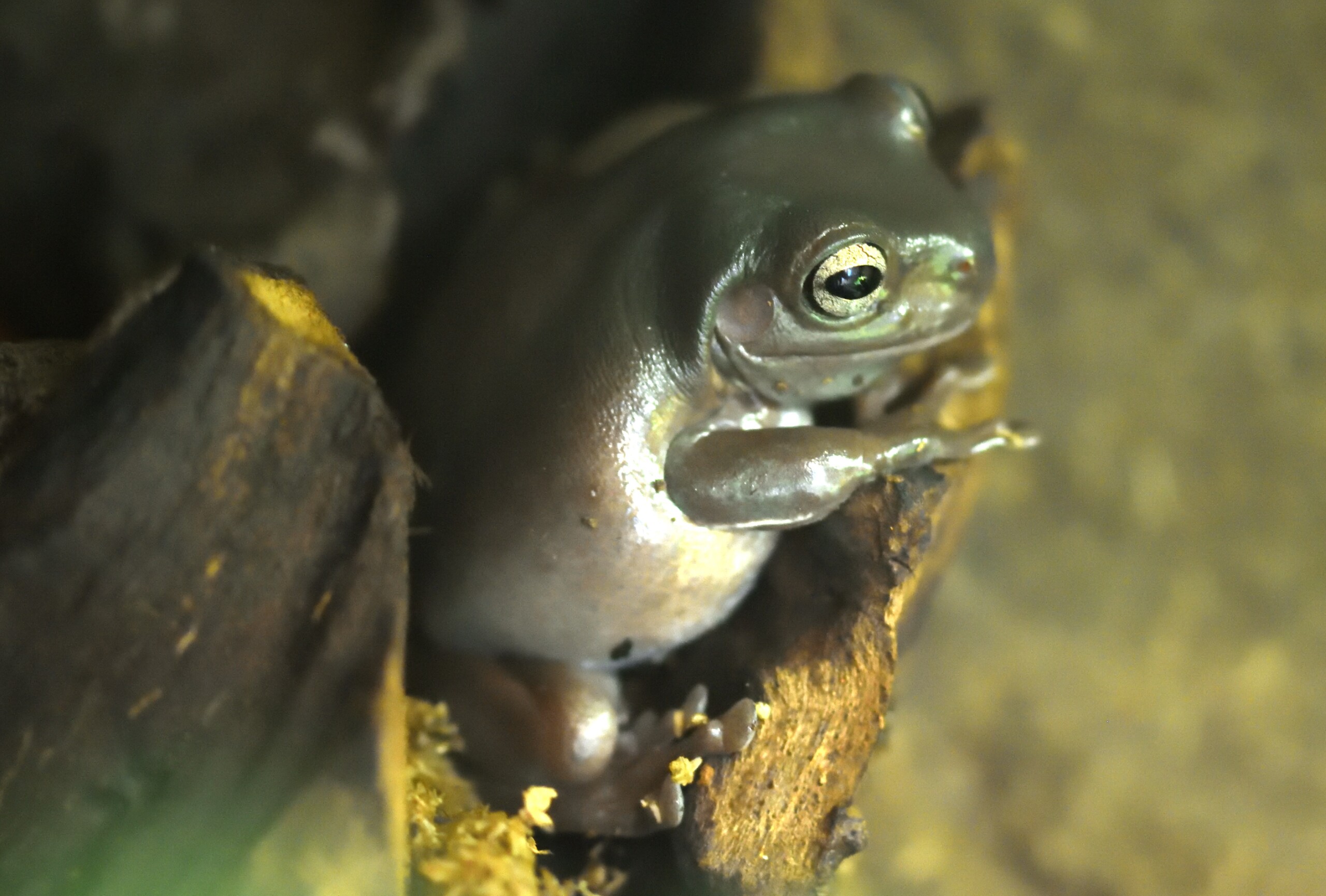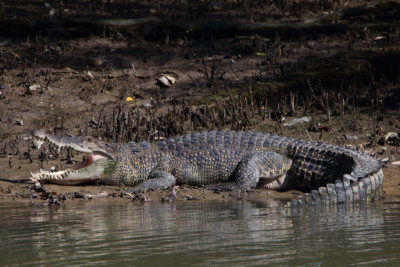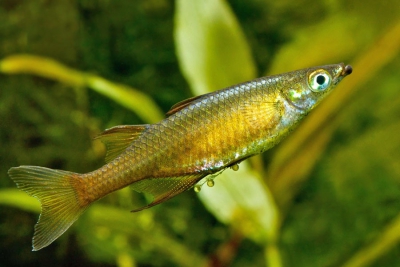Australian green treefrog
| Family | Hylidae |
|---|---|
| Genus | Ranoidea |
| IUCN category (World) | LC |


Introduction
The Australian green treefrog (Ranoidea caerulea) is a widely distributed species in Australia and New Guinea. Adapted to various environments, it is commonly seen in natural habitats such as forests, swamps, and anthropic areas.
Who is it?
Morphology
-
Size8 - 12 cm
-
Mimicryplants
-
Size8 - 12 cm
-
Mimicryplants
How to recognize this amphibian ?
This frog has smooth, green skin, sometimes with bluish hues. It usually measures between 7 and 11 cm, and can reach a maximum size of 12 cm.
Sexual dimorphism
Sexual dimorphism is minimal, with males being slightly smaller and possessing a vocal sac that they use to attract females during the mating season.
Behaviour & Life cycle
-
Sociabilitysolitary
-
Way of livingnocturnal
-
VenomousNo
-
Dietpredator
The Australian green treefrog is nocturnal and arboreal. It primarily feeds on insects and small invertebrates. This species is tolerant towards other individuals and is not particularly territorial.
Reproduction
-
Reproductionovipare
Reproduction occurs during the rainy season, from November to February. Males call females from hidden spots near water sources. Eggs are laid in clusters on the water's surface, and their development is complete in about six weeks.
Harmless species
The Australian green treefrog is completely harmless to humans. Its presence around human dwellings is generally viewed positively, as it helps control insect populations.
Origin and distribution
Geographic distribution & Conservation
The population of the Australian green treefrog is stable, and it is not globally threatened. However, habitat pollution, predation by domestic animals, as well as chytridiomycosis, pose local threats. Its status on the IUCN Red List is least concern.
Conservation status of populations (IUCN)
What is its habitat?
Natural environment characteristics
-
Temperature24 - 28 °C
Biotope presentation
This species inhabits dry forests, semi-arid areas, and swamps, often near water bodies. It can seek refuge in crevices, tree trunks, and even human structures. Common substrates include sand, pebbles, rocks, humus, and mud.
Species of the same biotope
To go further
Sources & Contributions
Participation & Validation
The Fishipedia team and specialist contributors are committed to providing high-quality content. However, although the information comes from scientific sources or testimonials from specialists, the cards may contain inaccuracies.
Translation
Translation done with the valuable contribution of our translators, who make this information available to a wider audience. We sincerely thank them for their commitment.
Scientific partners
Species of the same biotope















